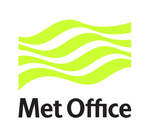CRUTEM3 time series
Calculating error bars on a time series average of CRUTEM3 is not a trivial process. Each component of the uncertainty on the gridded values has a different correlation in space and time, and these correlations have to be allowed for when averaging the errors.
- The station errors have large autocorrelations in time, but no correlation in space, and the grid-box sampling errors have little correlation in either space or time, so these two error components are small for global and large-scale averages.
- The biases (urbanisation and exposure) have strong correlations in space and time, so they are just as large for decadal global averages as for monthly grid-point values.
- Spatial averages contain an additional source of sampling error as there are regions of the world where there are no observations. We calculate the size of the error bars due to this lack of global coverage by looking at the effect of reducing coverage in a, globally-complete, reanalysis dataset.
To try and make these different effects clear we show the effects of these three components separately in the plots and data files for each time-series. The station and grid-box sampling uncertainties are shown in red, the coverage uncertainties in green, and the bias uncertainties in blue. The data files contain 12 columns:
- Column 1 is the date.
- Column 2 is the best estimate anomaly.
- Columns 3 and 4 are the upper and lower 95% uncertainty ranges from the station and grid-box sampling uncertainties.
- Columns 5 and 6 are the upper and lower 95% uncertainty ranges from the coverage uncertainties.
- Columns 7 and 8 are the upper and lower 95% uncertainty ranges from the bias uncertainties.
- Columns 9 and 10 are the upper and lower 95% uncertainty ranges from the combined station and grid-box sampling, and coverage uncertainties.
- Columns 11 and 12 are the upper and lower 95% uncertainty ranges from the combined effects of all the uncertainties.
More details are given in the paper introducing the dataset.
Commercial and media enquiries
You can access the Met Office Customer Centre, any time of the day or night by phone, fax or e-mail. Trained staff will help you find the information or products that are right for you.
Contact the Met Office Customer Centre |

